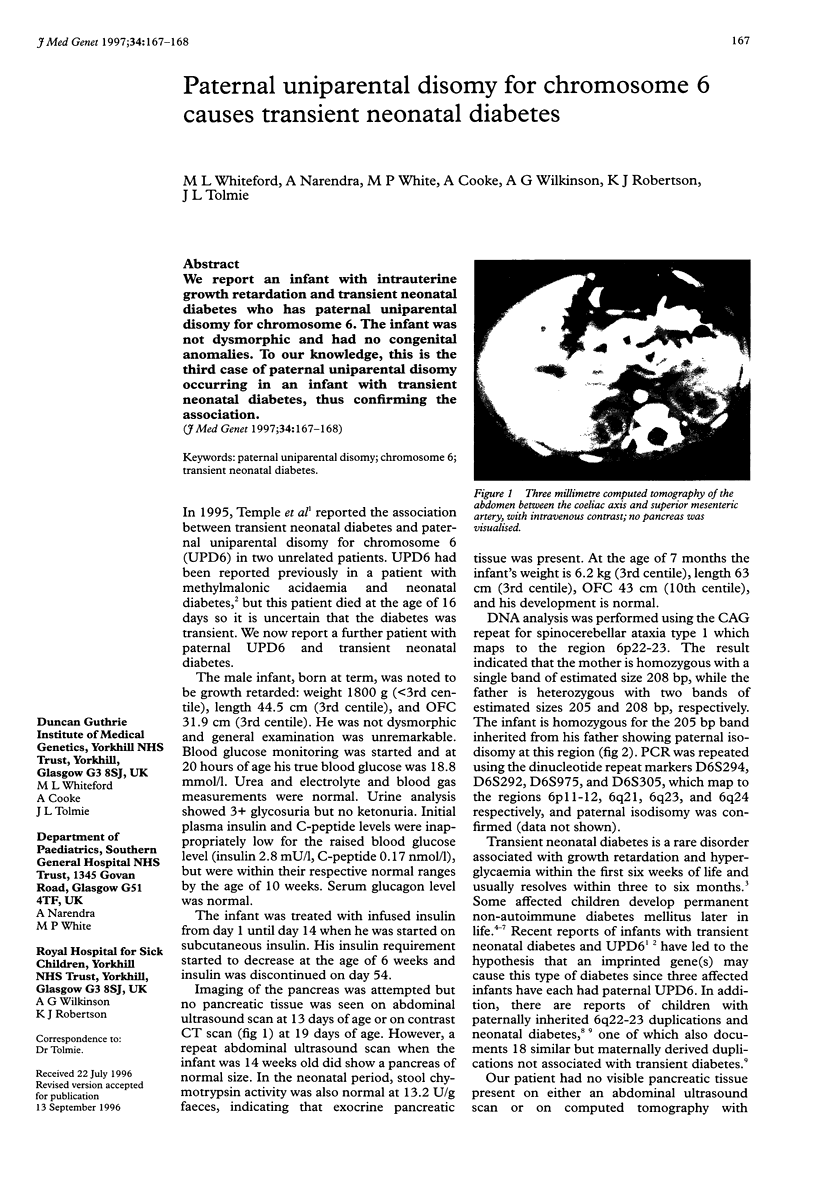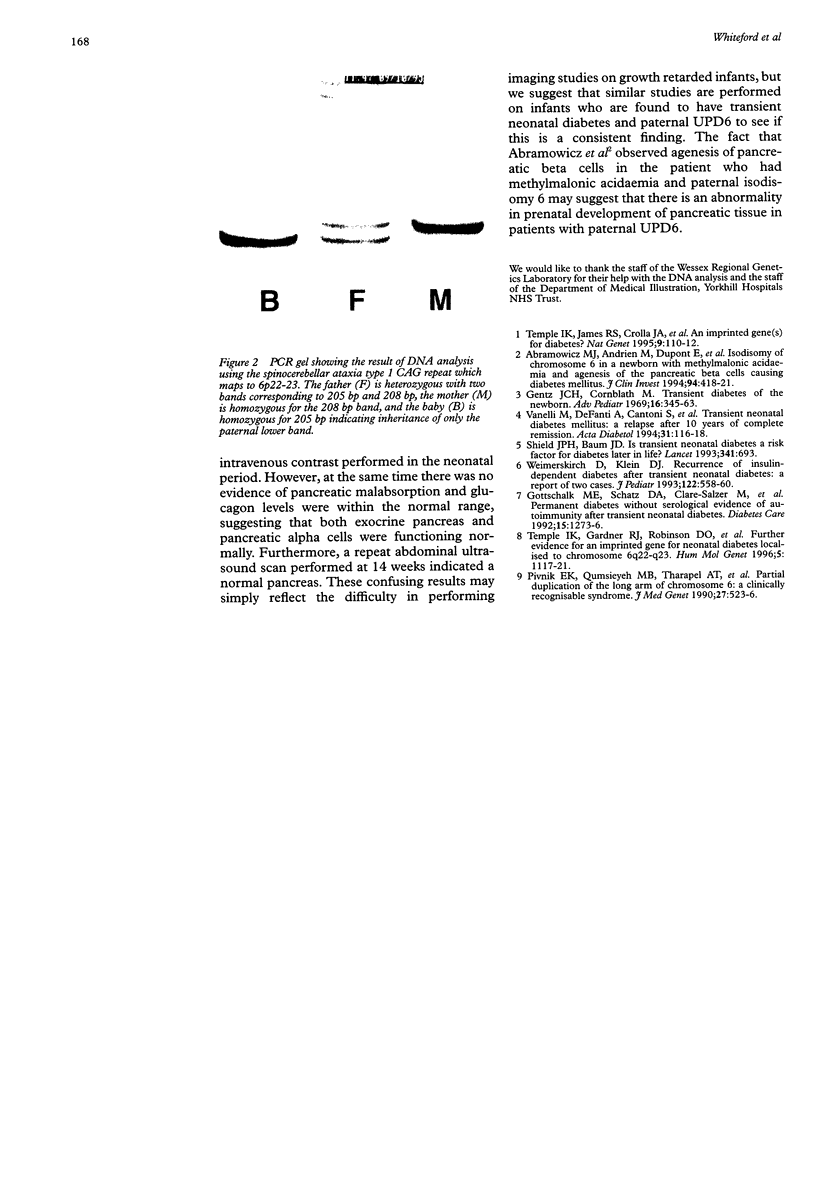Abstract
We report an infant with intrauterine growth retardation and transient neonatal diabetes who has paternal uniparental disomy for chromosome 6. The infant was not dysmorphic and had no congenital anomalies. To our knowledge, this is the third case of paternal uniparental disomy occurring in an infant with transient neonatal diabetes, thus confirming the association.
Full text
PDF

Images in this article
Selected References
These references are in PubMed. This may not be the complete list of references from this article.
- Abramowicz M. J., Andrien M., Dupont E., Dorchy H., Parma J., Duprez L., Ledley F. D., Courtens W., Vamos E. Isodisomy of chromosome 6 in a newborn with methylmalonic acidemia and agenesis of pancreatic beta cells causing diabetes mellitus. J Clin Invest. 1994 Jul;94(1):418–421. doi: 10.1172/JCI117339. [DOI] [PMC free article] [PubMed] [Google Scholar]
- Gentz J. C., Cornblath M. Transient diabetes of the newborn. Adv Pediatr. 1969;16:345–363. [PubMed] [Google Scholar]
- Gottschalk M. E., Schatz D. A., Clare-Salzler M., Kaufman D. L., Ting G. S., Geffner M. E. Permanent diabetes without serological evidence of autoimmunity after transient neonatal diabetes. Diabetes Care. 1992 Oct;15(10):1273–1276. doi: 10.2337/diacare.15.10.1273. [DOI] [PubMed] [Google Scholar]
- Montorsi F., Guazzoni G., Bergamaschi F., Zucconi M., Rigatti P., Pizzini G., Miani A., Pozza G. Clinical reliability of multi-drug intracavernous vasoactive pharmacotherapy for diabetic impotence. Acta Diabetol. 1994 Apr;31(1):1–5. doi: 10.1007/BF00580752. [DOI] [PubMed] [Google Scholar]
- Pivnick E. K., Qumsiyeh M. B., Tharapel A. T., Summitt J. B., Wilroy R. S. Partial duplication of the long arm of chromosome 6: a clinically recognisable syndrome. J Med Genet. 1990 Aug;27(8):523–526. doi: 10.1136/jmg.27.8.523. [DOI] [PMC free article] [PubMed] [Google Scholar]
- SOX9 and the switch hitting genes. Nat Genet. 1995 Jan;9(1):1–2. doi: 10.1038/ng0195-1. [DOI] [PubMed] [Google Scholar]
- Shield J. P., Baum J. D. Is transient neonatal diabetes a risk factor for diabetes in later life? Lancet. 1993 Mar 13;341(8846):693–693. doi: 10.1016/0140-6736(93)90461-o. [DOI] [PubMed] [Google Scholar]
- Temple I. K., Gardner R. J., Robinson D. O., Kibirige M. S., Ferguson A. W., Baum J. D., Barber J. C., James R. S., Shield J. P. Further evidence for an imprinted gene for neonatal diabetes localised to chromosome 6q22-q23. Hum Mol Genet. 1996 Aug;5(8):1117–1121. doi: 10.1093/hmg/5.8.1117. [DOI] [PubMed] [Google Scholar]




